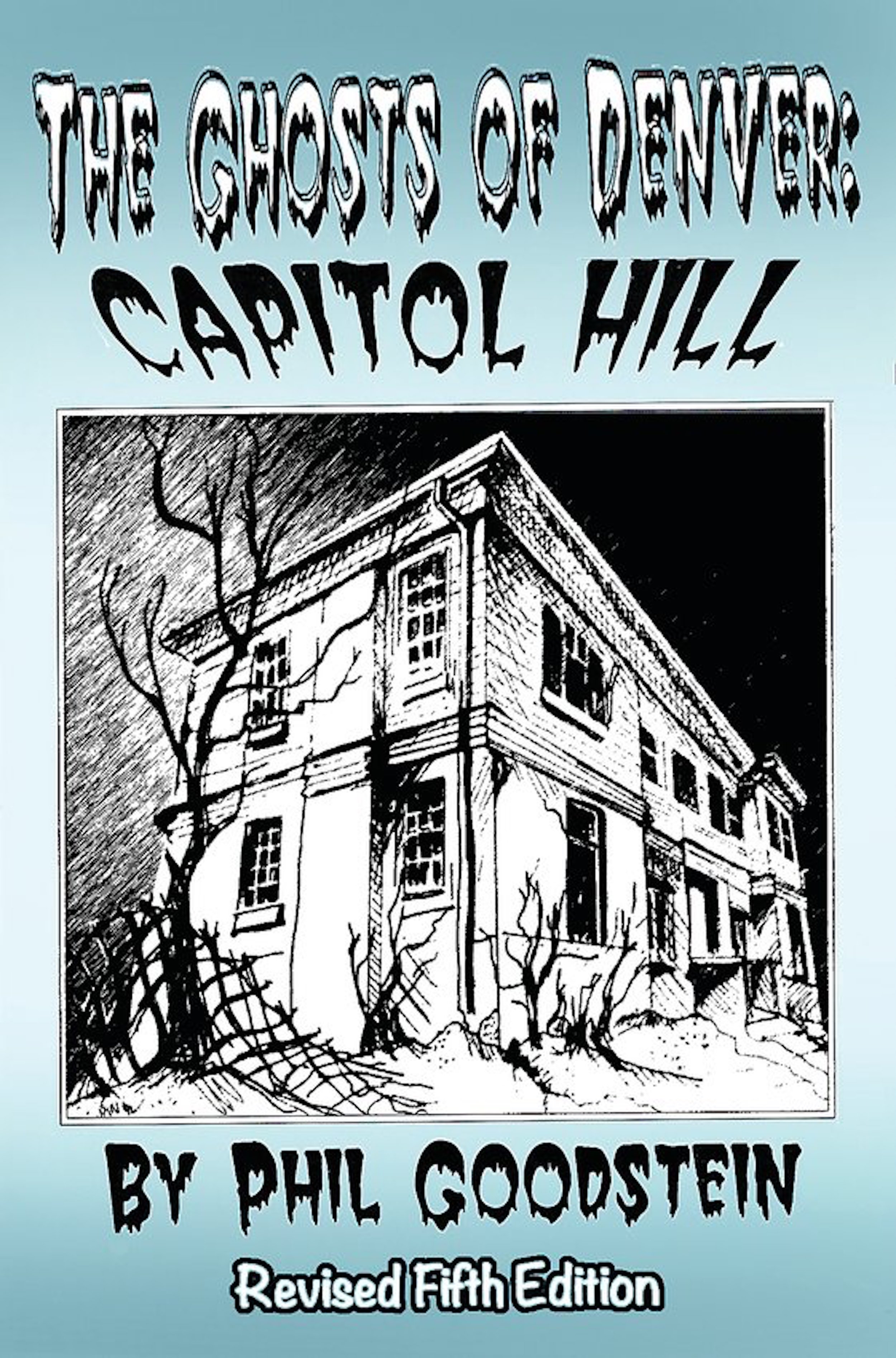Story
The Ghosts of Denver: Capitol Hill
A review of the fifth edition of Denverite Phil Goodstein's best-selling book, The Ghosts of Denver: Capitol Hill.
Editor's note: This review comes to you from the Colorado Book Review. More reviews can be found at the Denver Public Library.
By my unofficial count, Denver native Phil Goodstein has published twenty-four books on Colorado history. His latest is a fifth edition of his 1988 best seller, The Ghosts of Denver: Capitol Hill.
Goodstein is a voracious researcher, and his many books reflect that passion. Ghosts, for example, is a whopping 538 pages, plus a lengthy bibliography and index. For the latest revision Goodstein has added 100 pages devoted to updates since the original version came out thirty-four years ago.
Goodstein defines Capitol Hill as that part of East Denver bounded by Broadway, Colorado Boulevard, Twentieth Avenue, and Cherry Creek. But he also breaks it down into smaller segments, including Wyman, City Park, Quality Hill, Cheesman Park, and my favorite, Capitol Heights. (Full disclosure: it’s my neighborhood. The Barbie Doll and Russell Stover Candies were born there, and it is home to East High School and to the peculiarities of Colfax A and B.)
Goodstein relies heavily on the Denver City Directory, pinpointing addresses where prominent residents hop-scotched through the neighborhoods, seeking more luxurious locations to live. Those looking for spooky tales of the undead will be disappointed. Goodstein’s “ghosts” are largely the Victorian mansions and long-gone businesses that have fallen by the wayside, thanks to urban renewal and a tidal wave of transplants to the city. “It is impossible to document claims about ghosts,” he writes. “Tales of haunted houses need to be treated for what they are, urban folklore” (p. 4). He does give a nod to some popular haunted sites, like the Croke-Patterson Mansion at Eleventh and Pennsylvania, which has a long history of apparitions and things that go bump in the night.
Ghosts is amply illustrated with historic photographs of those nineteenth-century mansions of the rich that no longer exist and photos (many of them by the book’s author) of those that have managed to survive. His writing style is unadorned, sticking to the facts with an occasional poke at the establishment. Thanks to an extensive list of addresses (shades of his indispensable Denver Streets: Names, Numbers, Locations, Logic, 1994) readers can map out a self-guided tour of those sites that haven’t been plowed under for fast-food joints and the proliferation of high rises.
The newest version of Ghosts includes many parts of the original, but there are new parts, too. For example, he looks at the future of the area. Traffic continues to be a defining influence. Goodstein takes city administrations to task for yielding to the automobile and for recently making space for numerous bike lanes and street closures. Eighth and Thirteenth avenues are speedways for suburbanites heading to downtown. Trees have been cut down to allow for widened avenues; some streets have been widened until only a sliver of sidewalk remains. In 1957 York and Josephine and other streets were made into paired one-ways to alleviate traffic hold-ups. “By the 1970s, the area was highly transient,” he writes. “From a flourishing residential area filled with neighborhood shops, North Capitol Hill increasingly resembled a bombed-out slum” (p. 539). Colfax Avenue is the spine that runs through Capitol Hill. Once a thriving shopping and residential district, it deteriorated by the 1970s into a crime-ridden thoroughfare bedeviled by criminals, street prostitutes, dive bars, drug dealers, and fast-food joints.
But Goodstein hasn’t given up hope. Citizen-powered groups continue to battle against city-sponsored “improvements” and predatory developers. “Common themes have united residents. Time and again they have found themselves forced to band together to assure tranquility of the area” (p. 479). They fought off plans, for example, to make Sixth Avenue a cross-town freeway.
In Goodstein’s view (and he’s no Pollyanna), the early part of the twentieth century has seen a return of younger residents, drawn by the remaining historic homes, tree-lined streets, and proximity to downtown.

